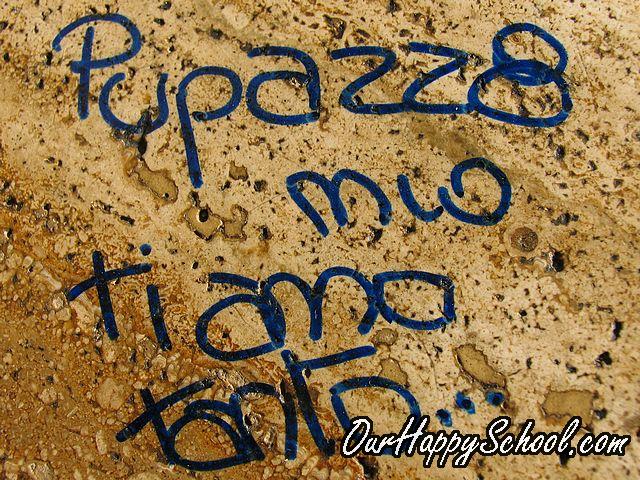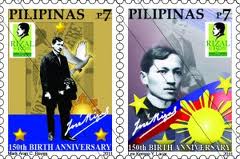Submitted by admin on Wed, 01/12/2011 - 13:00
... 4. e-learning is naturally suited to distance learning and flexible learning, but can also be used in conjunction with face-to-face teaching, in which case the term blended learning is commonly used.
5. e-Learning pioneer Bernard Luskin argues that the "e" should be interpreted to mean exciting, energetic, enthusiastic, emotional, extended, excellent, and educational in addition to "electronic."
6. Some of the applications, processes, and media involved in e-learning are Computer-based learning, Web-based training, virtual classroom, Social networks, Blogs, and other digital collaboration ...
Submitted by admin on Wed, 01/12/2011 - 12:42

1.
e-learning enables people to learn anytime and anywhere. It allows learners to receive instruction despite geographic and time disparities.
2. It could cater to people with physical disabilities, women who were not allowed to enroll in educational institutions open only to men, people who had jobs during normal school hours, and those who lived in remote regions where schools did not exist.
3. It could provide educational opportunities to people in a country despite shortage of classrooms, qualified teachers, and instructional materials ...
Submitted by admin on Mon, 01/10/2011 - 06:06
MARICOR QUILNAT, the contributor, is from Las Pinas City, Philippines. (You, too, can have your articles published here. Send them through e-mail to OurHappySchool@yahoo.com.)

WE NEVER HAD A PET AT HOME. Once my dad brought a puppy in our house but my mom gave it to my uncle because of the mess it created so I didn’t have that much interest on it. However, this year 2010, my professor in philosophy gave me an assignment to collect 100 true statements about pets and I’ve discovered amazing facts about them that made me want to have a pet of my own.
Submitted by admin on Mon, 01/10/2011 - 05:26

A poem contributed by DIANNE DE GUZMAN PERLAS from Philippines. This poem she composed during her high school days serves as her inspiration in finishing her course. (You, too, can have your articles published here. Send them through e-mail to OurHappySchool@yahoo.com.)
YOU CAN DO IT
OTHERS THINK LIFE is so unfair,
They are always asking why and how,
It’s not easy to live and to travel far.
Achieving ones goal take times somehow.
Submitted by admin on Sun, 01/09/2011 - 12:04
This article on plagiarism contributed by MARY ROSEANN A. RAMIREZ was originally published in the December 2010 issue of SINAG-CSSP, the official publication of the College of Social Sciences and Philosophy (CSSP) UP Diliman. Its complete title is "'CAUSE I TOTALLY CHEATED ON THIS ARTICLE1: Or, How to Successfully Plagiarize in UP Diliman." (You, too, can have your articles published here. Send them through e-mail to OurHappySchool@yahoo.com.)

EVERYTHING can be plagiarized. Quotations, articles, blogs, photos, graphs, lesson plans, source codes, web sites, drawings, music, even ideas. With enough practice, you’ll never have to do any work at all ...
1. Alter words but imitate the structure of the sentence without citing the original. Yeah, exactly like that ...
2. Copy words or ideas from someone without giving credit, but make sure too misppell a few things on perpose! ...
Submitted by admin on Tue, 01/04/2011 - 13:54
UHAAAH! IT'S A BOY! . . . tears overflowing down my cheeks . . . “Mama, it is a baby boy!” . . I have a brother now!
My father was dancing and singing in great joy. Relatives came, to see the newcomer, the new member of the clan, and that was my sweet little brother ...
Submitted by admin on Tue, 01/04/2011 - 13:39

Editor’s note:
The following is the article written by today’s most famous Filipino historian Ambeth R. Ocampo on Jose Rizal’s death. Simply entitled, “The Death of Jose Rizal,” this historical piece by the current head of the National Historical Institute (of the Philippines) could be deemed refreshing and controversial, as it offers several unpopular and unorthodox accounts of what (presumably) transpired on the day of Rizal’s execution. For one thing, it virtually proclaims that Rizal refused to kiss the crucifix before he was executed, thereby negating the claim of other historians (like Zaide) that the national hero even asked for this Catholic sacramental. Happy reading!
… Although he was walking to his death, eyewitnesses describe Rizal as serene – a bit pale, not because of fear of his fate, but because he had not had any breakfast. All he had been given were three hard-boiled eggs, which he took to a corner of his prison cell, saying, “This is for the rats; let them have a fiesta, too.” Then he left his cell ...
Submitted by admin on Thu, 12/30/2010 - 03:35
BECAUSE SCIENCE IS, or is supposedly, empirical or verifiable, it seems to provide our paradigm of objectivity. And in comparing ethics to science, “ethics seems to lack the features that make science so compelling” (James Rachels,The Elements of Moral Philosophy: 1999).
In fact, many assert that there are no proofs in ethics. While we can prove that the world is round and that two plus two equals five, we cannot, they say, prove that abortion is right or wrong. So the “No-Proof Argument” as outlined by Rachels goes like this:
Submitted by admin on Thu, 12/30/2010 - 03:27
THE FAMOUS SCOTTISH PHILOSOPHER David Hume (1711-1776) claimed that if we examine wicked actions—“willful murder, for instance”—we will find no “matter of fact” corresponding to the wickedness. This view, which was adopted by many contemporary evolutionists and atheists like Richard Dawkins, suggests that the universe, apart from our attitudes, contains no such [moral] facts.
Submitted by admin on Thu, 12/30/2010 - 03:15
EMOTIVISM IS THE THEORY IN ETHICS that states that moral judgments do not state any fact at all but are mere expressions of one’s attitude used to influence people’s attitudes and conduct.
Nonetheless, ethicist James Rachels in his bookThe Elements of Moral Philosophy (USA:McGraw-Hill College, 3rd ed., 1999) proved very well that a moral judgment or any kind of value judgment must be supported by good reasons ...
Pages